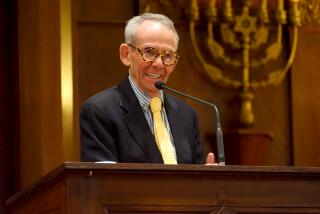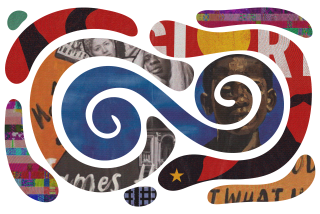Review: The ‘Great Gatsby’ copyright bonanza stumbles out of the gate with ‘Nick’
On the Shelf
Nick
By Michael Farris Smith
Little, Brown: 304 pages, $27
If you buy books linked on our site, The Times may earn a commission from Bookshop.org, whose fees support independent bookstores.
We’re not far into “Nick,” Michael Farris Smith’s new prequel to “The Great Gatsby,” before its hero has experienced enough combat, free living and disillusionment to launch the Jazz Age all by his lonesome. Nick — that is, Nick Carraway, the narrator of F. Scott Fitzgerald’s immortal “Gatsby” — is a soldier in France during World War I. In Paris during breaks from the horrors of trench warfare, he’s fallen hard for Ella, a bohemian picture framer who scrapes by in a theater attic. But tragedy, in both love and war, is abundant. Despondent, he takes a dangerous post in the battleground tunnels, listening for Germans planting explosives.
“He was a watcher,” Smith writes. “He was a listener.”
You can practically feel the elbow jabbing your ribs. “You see? You see?” the story implores. “Here’s how Nick became the perfect narrator for ‘Gatsby.’”
There’s a lot of that in “Nick,” an earnest but humid and ill-advised attempt to deepen a top-tier candidate for the Great American Novel by applying some backstory to its least interesting character. The problem isn’t that Smith is a poor writer. He’s a decorated purveyor of Southern gothic fiction with five novels behind him, and he sells the reader on Nick’s PTSD, as well as the idea that he might have taken a detour to New Orleans between France and West Egg. Nursing a broken heart, he spends the latter portions of the novel having the kind of experiences that might reasonably prepare him to process the tragedy on Long Island.
Naggingly, though, “Nick” keeps making you wonder why it exists. The practical explanation for that is simple: “Gatsby,” like all U.S. copyrighted works published in 1925, enters the public domain this year, opening it up to all manner of repurposing without fear of legal action. Legal license or not, “Gatsby”-inspired fiction has been around before 2021. Stephanie Powell Watts’ 2017 novel, “No One Is Coming to Save Us,” re-imagined the “Gatsby” plot in a Black community in North Carolina; Tom Carson’s sprawling 2011 novel, “Daisy Buchanan’s Daughter,” played loose with the characters’ fates. (Nick becomes a monk in that one.)
Director Baz Luhrmann’s ‘The Great Gatsby’ is a smothering spectacle for the audience and actors alike, though Leonardo DiCaprio succeeds in the lead role.
But it’d be nice to think the real reason writers have resisted revisiting “Gatsby” in earnest is because it’s thematically sequel-proof. It’s a novel about the perils of nostalgia, about the hopelessness of pining for a lost moment you can’t possibly hope to recapture.
Fitzgerald made that point so plain that countless American high-schoolers learned about hubris through him. When Gatsby’s glitzy facade, built to regain Daisy Buchanan’s affections, has begun to collapse, Nick pleads: “You can’t repeat the past.” Gatsby explodes: “Why of course you can!” Cue car accident, gunshots, pool, foreboding green light, foreboding billboard, boats against the current, etc.
Jane Austen fans have endured all manner of reboots and reconsiderations, from zombies on down, because her themes are so big and flexible: courtship, friendship, the institutions that narrow women’s options and bloat men’s arrogance. “Gatsby,” though, is more a universe unto itself, the product of the interlocking delusions and deceits of its characters. A novel about the inner Gatsby would only dispel the myth he created around himself, and the novel already does that. A novel about Daisy would only underscore her flightiness; a novel about Tom would only underscore his selfish swagger. Who’s left? Myrtle?
Well, there’s Nick, the sole character prominent enough, yet also enough of a blank, to make the effort seemingly worth the while. As a novelist, Smith appreciates the gaps he gets to fill: “You got the look of not telling everything,” a supply clerk on the front tells Nick. But there are really only two questions a prequel can address: First, what makes him angry enough to think of Gatsby as representative of “everything for which I have an unaffected scorn?” Second, what gave him the patience to endure so much rich-people nonsense and write about it with clear eyes?
During the war, Gatsby met a woman he couldn’t let go of. Nick, by contrast, is forced to let go. Ella, in her shabby attic lighted with candles in old wine bottles, provides a lesson in the fleeting nature of love that feels ripped clean from “La Bohème.” Smith doesn’t attempt to mimic Fitzgerald, but there’s a lot of ersatz Hemingway: “They had lain awake in the middle of the night in the attic and he told her that he was not certain anymore of his home.” The symbolism around lack of identity is obvious to the point of oppressiveness: clouds of smoke, hosts of theater costumes in Ella’s garret.
In ‘Zoe’s Tale,’ John Scalzi returns to his ‘Old Man’s War’ series from the viewpoint of a wise-cracking teen
In New Orleans, Nick becomes entangled in a love triangle that echoes the “Gatsby” plot. A war veteran and opium addict, Judah, is so distraught over his breakup with a madam, Collette, that he plots to have her brothel burned to the ground. Violence and trauma soak the story, but Smith never quite settles on making Nick either an active participant in the drama or a passive observer.
Ultimately, the novel becomes what Fitzgerald almost magically avoided in “Gatsby” — a melodrama. “You don’t have to hurt people because they hurt you,” Nick pleads with Judah. “Yeah. You do,” he responds. (Longueurs of faux Faulkner in these sections exacerbate the feeling: “He floated somewhere between the world that exists in the vast expanse of all we have known and done and seen and the world of what touches us now.”) If history is any guide, a healthy lack of loyalty to the source material is essential to a good riff on a classic: Think of John Gardner’s “Grendel” or Michael Cunningham’s “The Hours.” But “Nick” doesn’t so much clarify Nick’s character in “Gatsby” as photocopy it.
All derivative spinoffs have to strain to preserve the strengths of the original without merely reprocessing them. The batch of “Gatsby” novels that is surely coming will want to address the stuff that has enchanted readers for most of a century — its messages about greed, unrequited love, nostalgia, the urge to escape our upbringing. And perhaps a great “Gatsby”-inspired novel might yet crack the code.) But “Gatsby” itself is dead-set against it. Nick may in the end be the worst subject for a spinoff. He, more than anyone, knew how foolish it can be to dwell on the past.
In travel writer Richard Grant’s “The Deepest South of All,” Natchez, Miss., is full of characters, stubborn racist traditions and lots of contradictions.
Athitakis is a writer in Phoenix and author of “The New Midwest.”






